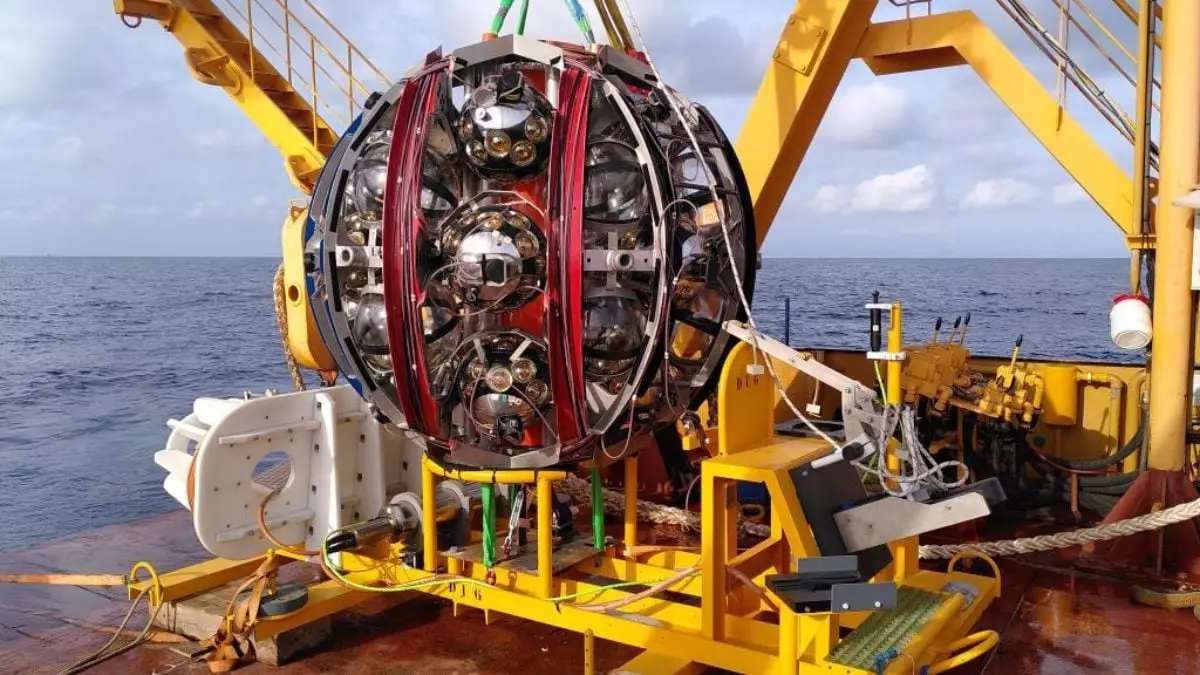The Mediterranean Sea is currently the focal point of an innovative scientific endeavor: the installation of the KM3NeT underwater neutrino telescope. This monumental project aims to enhance our understanding of the universe by detecting high-energy neutrinos, which are elusive subatomic particles believed to originate from chaotic cosmic events. Unlike traditional telescopes that rely on light from distant objects, KM3NeT utilizes the phenomenon of Cherenkov radiation, where neutrinos interacting with seawater emit faint flashes of light detectable by specialized sensors.
KM3NeT’s architecture incorporates two sophisticated telescopes situated on the seabed, an intricate construction that sprawls across a cubic kilometer of the Mediterranean landscape. Each telescope consists of segments adorned with glass spheres that house photomultiplier tubes—devices capable of identifying the fleeting light released during neutrino collisions. Physicist Simone Biagi from Italy’s National Institute for Nuclear Physics emphasizes that deploying these lighting systems demands precision; cables resembling strands of pearls, stretching up to 700 meters, have to be meticulously lowered to the ocean floor. A remotely operated submersible facilitates the intricate assembling and inspection of the setup, crucial for ensuring the reliability of the entire operation.
The KM3NeT project includes strategically positioned telescopes, one anchored off the coast of Sicily and another near France’s shores. The Sicily installation is tasked with focusing on high-energy neutrinos emanating from the cosmos, promising a window into previously obscured astrophysical phenomena. Conversely, the telescope near France is committed to unraveling the behavior of atmospheric neutrinos and examining their oscillatory patterns, which are vital for understanding particle transformations. These oscillations could provide critical insights into essential questions regarding fundamental physics and the nature of the universe.
Undoubtedly, the endeavor is fraught with challenges, particularly due to the demanding environmental conditions of the Mediterranean. Deployment campaigns occur annually, stretching for roughly a month, during which researchers face immense time constraints and high stakes. Errors during deployment can have severe repercussions, as correcting any issues becomes nearly impossible once the equipment is submerged. Nevertheless, the partially completed telescopes are reportedly already contributing valuable data, leading to groundbreaking research into fundamental aspects of physics, such as quantum gravity and neutrino behaviors.
As KM3NeT continues to evolve, physicists remain hopeful that this ambitious underwater observatory will provide a deeper understanding of cosmic events and the unseen forces of the universe. The implications of their findings stand to not only advance our theoretical frameworks but also inspire new technological innovations in particle detection. In a world where mysteries of the universe persist, projects like KM3NeT spark curiosity and exemplify the relentless human quest for knowledge beyond the stars.

